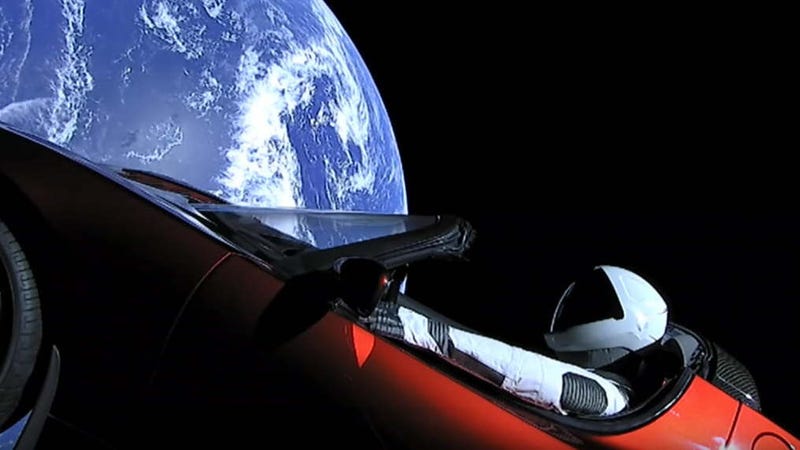 Image: SpaceX
Image: SpaceX
SpaceX’s Starman and cherry red Tesla Roadster have traveled beyond Mars. SpaceX shared a diagram of the car once driven by the aerospace manufacturer’s CEO Elon Musk indicating it has now reached beyond the Red Planet.
Sharing Starman’s current position in a diagram to Twitter, SpaceX also tweeted a nod to Douglas Adams’ seminal work The Hitchhiker’s Guide to the Galaxy, which is beloved by Musk. (The Restaurant at the End of the Universe refers to the second book in the series.) The dash of the Roadster itself even has a nod to Hitchhiker’s Guide, as Space.com notes the words “Don’t Panic” on its control panel also appeared on a cover of the novel.
SpaceX launched the Tesla Roadster and its inanimate passenger into space as the payload on the Falcon Heavy rocket’s maiden launch in February, a feat that was largely perceived to be a publicity stunt by Musk.
“Payload will be my midnight cherry Tesla Roadster playing Space Oddity,” Musk tweeted in December prior to its launch. “Destination is Mars orbit. Will be in deep space for a billion years or so if it doesn’t blow up on ascent.”
Musk’s former ride isn’t the only thing he plans to shoot into space for seemingly little purpose beyond novelty. In October, Musk tweeted that Tesla owners could refer a friend to purchase one of its cars and “get any image they want laser etched in glass & sent to deep space for millions of years.” (Musk later added that there is no restriction on the kind of image that can be submitted, which is sure to turn up some real gems.)
The Roadster reached beyond Mars some nine months after its initial launch, but it won’t stay there. Per Space.com:
The Roadster and Starman will come within a few hundred thousand kilometers of our planet in 2091, according to an orbit-modeling study. The authors of that study determined that the car will slam into either Venus or Earth, likely within the next few tens of millions of years. They give the space car a 6 percent chance of hitting Earth in the next 1 million years, and a 2.5 percent chance of smacking Venus in that span.
Being that there’s essentially no way you could ever drive this thing again anyway, that’s probably just fine.
[Twitter]
Share This Story